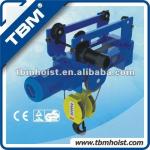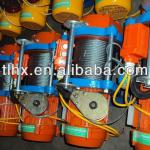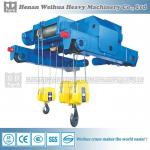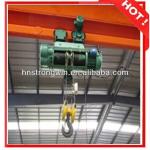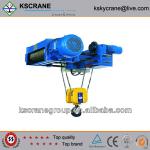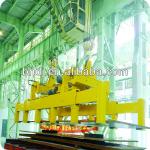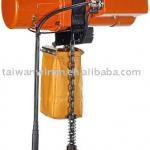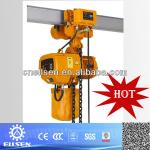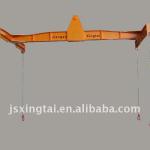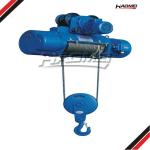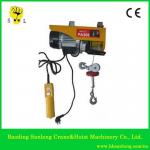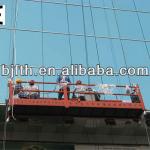Lever Hoist To EN13157 with CE & GS
| Place of Origin:Zhejiang China (Mainland) | Brand Name:TLE | Model Number:TL0202 | Usage:Construction Hoist |
| Power Source:Hand Chain | Sling Type:Chain | Maximum Lifting Weight:9T | Maximum Lifting Height:1.5M |
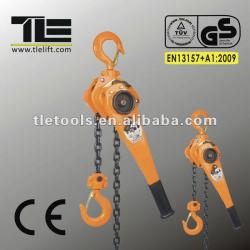
A lever hoist is a manual device used to lift, lower, or pull a load and to apply or release tension. It utilizes a ratchet and pawl mechanical configuration to incrementally raise or lower a load or to apply or release tension.
Lever hoists and pullers have the advantage of being easy to transport, require minimum set-up, and are a practical option in confined spaces. They are suitable for different applications ranging from heavy-duty construction work to day-to-day maintenance and repair jobs.
1. TECHNICAL DETAILS
* Capacity from 0.25T to 9T.
* Compact and lightweight for easy handling.
* light-weight steel body with durable powder coat.
* Short hand lever with rubber grip.
* Asbestos free brake, holding load at any desired height.
* High tensile Grade 80 alloy steel load chain for safety and reliability.
* Drop forged hooks and hook holders to ensure superior quality and safety.
* CE&GS certified.
2. SIMILAR MODELS
3. PRODUCTION
4. INSPECTION BEFORE USE
Ensure that the lever hoist name plate plate is clearly visible and that the WLL is legible.
The pre-use inspection of a lever hoist should include the following:
*Load chain
Inspect chain for wear, gouges, nicks, arc burns, twisted and bent links and corrosion.
Inspect for correct reeving on 6 tonne units.
* Lift wheels & Sheave Wheels
Inspect lift wheel for foreign material, wear and corrosion.
Inspect sheaves for wear, freedom of movement and corrosion.
Inspect dead end pins for wear, tightness and corrosion.
* Hooks
Inspect hooks for signs of opening, cracking, bending, arc burns, welds and corrosion.
Hooks should swivel freely.
* Miscellaneous
Inspect the frame and covers for deformation, warping, severe denting and other damage.
Inspect safety catches for condition and operation.
Measure hook throats for allowable service openings. Inspect hangers (6 tonne hoist) for cracks, gouges, corrosion and other damage.
Inspect lever handle for overloading or any signs of distortion.
Check for freewheeling function.
Ensure raise and lower selections operate correctly.
Check there is an end stop fitted to the chain.
5. CARE IN USE
All persons involved in the operation of a lever hoist must read the manufacturers handbook and be completely familiar with all operating and maintenance procedures.
* When operating a lever hoist, always maintain a firm footing and when necessary be secured. Operate the lever hoist from a location that will be clear of the load at all times. People must stay clear of the suspended load. Never use the lever hoist to lift, support or transport people and never lift loads over or near people.
* Before lifting a load, confirm that the lever hoist is in good condition and functioning properly.
* Always keep the load chain well lubricated and protect it from weld spatter and other damaging contaminants.
* Never allow the load chain or hooks to be used as a ground for welding and never touch them with live welding electrodes.
* Never use the lever hoist with twisted, kinked, damaged or worn load chains and never attempt to lengthen the load chain.
* Always use proper slings and attachments in the correct manner and confirm that they are seated properly in the hooks. Also confirm that the safety catch assembly has closed completely and is not supporting any part of the load.
* Never lift more than the rated WLL.
* Slack load chain must be taken up carefully. While checking the balance of the load, lift and lower the load about 100mm to test the brake system before lifting further.
* Never run the load chain out beyond the range of lift.
* Never allow your attention to be diverted when operating the lever hoist and never leave a suspended load unattended.
* Inspect the lever hoist regularly. Never use a lever hoist when malfunctioning or when unusual performance or damage is evident.
* Never adjust or repair a lever hoist unless you are competent in performing hoist maintenance.
* Never modify the lever hoist.
* Never remove or obscure the nameplate on the lever hoist.
* Examine the load chain to ensure that there is no twist. Lever hoists can lift on 2 falls of load chain; twists can arise from the bottom hook being accidentally turned over through the load chains.
* Confirm that the supporting structure is strong enough to support the intended load.
* The changeover lever must be set to the "UP" position when the lever hoist is under a load during hoisting or pulling operations. In some cases with light loads (less than 2% of the WLL) if the changeover lever or hub is set to the neutral position, the free-wheeling system will function, and the lever hoist will not be able to support the load.
* Lifting a load with two lever hoists is not recommended. If the job is unavoidable, keep the load well within the total rated capacity of the two lever hoists and lift with exceptional care while maintaining proper balance, angle and lifting speed.

| Packaging Detail:Strong Carton Packing or Wooden Case Packing. |
| Delivery Detail:Within 35 days against order confirmation |



